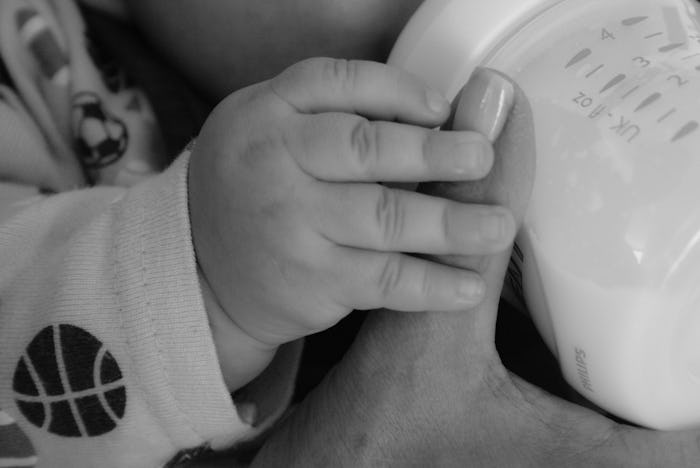Using baby formula often comes with so much fear and guilt. Moms have to come to terms with not exclusively breastfeeding in a society where formula equals failure. For months, they will have to explain to friends and strangers alike why their baby isn't drinking breast milk. The last thing a new mom really wants to deal with is figuring out what to look for in a formula as they stand, guilty and confused, in the middle of an enormous baby super store.
I must confess, when I had my children, I didn't research formula at all. We were given samples at the hospital and my husband and I continued buying the same brand when those ran out. A couple of months later, my niece was born prematurely and was given a high calorie formula. Weeks later, after some digestive problems, she was switched to a soy-based formula. It was then that I realized how many formula options are currently on the market.
If you look closely you will see that a typical baby aisle contains no less than a dozen different baby formulas. How does a parent decide? Here are some things to look for in a formula to help you make the best choice for your baby.
1Type Of Formula
According to Kids With Food Allergies, there are several types of infant formulas available. These include milk-based formulas, soy formulas, partially hydrolyzed formulas, extensively-hydrolyzed formulas, and amino acid-based formulas. There are also lactose-free formulas and formulas for premature or low-birth-weight babies according to Baby Center. Milk-based formulas are the most common, and parents of infants with no allergies typically choose these. If your baby has food sensitivities, allergies, or special needs, your doctor may recommend a specialty formula.
2Preparation
Baby formula comes in three forms: powdered, liquid concentrate, and ready-to-feed. Each have their own pros and cons. Both powdered formula and liquid concentrate have to be mixed with water, which makes the ready-to-feed the easiest to prepare, but it's also the most expensive. Powdered formula is the least expensive and lasts the longest.
3Shelf Life
The liquid concentrate and ready-to feed formulas must be stored in the refrigerator once opened, as opposed to the powdered formula that can stay at room temperature. The ready-to-feed and liquid concentrate can only be stored in the refrigerator for 48 hours once opened, according to Kids Health, while the powdered formula has a shelf life of 30 days once opened according to Baby Center. If you only occasionally formula feed, some companies make single-serve pouches of powdered formula and smaller cans of concentrate and read-to-feed formulas.
Also, refrigerated formulas take longer to heat up than powdered formula, because the powder can be mixed with room temperature water.
4Other Ingredients
All formulas contain carbohydrates, protein, fat, vitamins, and minerals. What varies, according to Baby Center, are the specific carbohydrates and proteins as well as any additional ingredients that the formula might contain. Specialty formulas can contain ingredients such as rice starch, dietary fiber, amino acids, probiotics and prebiotics. Your pediatrician can recommend the type of formula that will work best for your baby.
WebMD recommends contacting your pediatrician immediately if your baby shows any signs of an allergic reaction to the formula such as dry, red, and scaly skin, diarrhea, extreme fatigue or weakness, or forceful vomiting.
5Name Brand Versus Generic
According to Baby Center generic brands of formula must meet the FDA's nutritional requirements, therefore the only difference between generic and name brand formulas is the price. The additional ingredients in all formulas (name brand and generic) can vary, so you should always read the labels.
